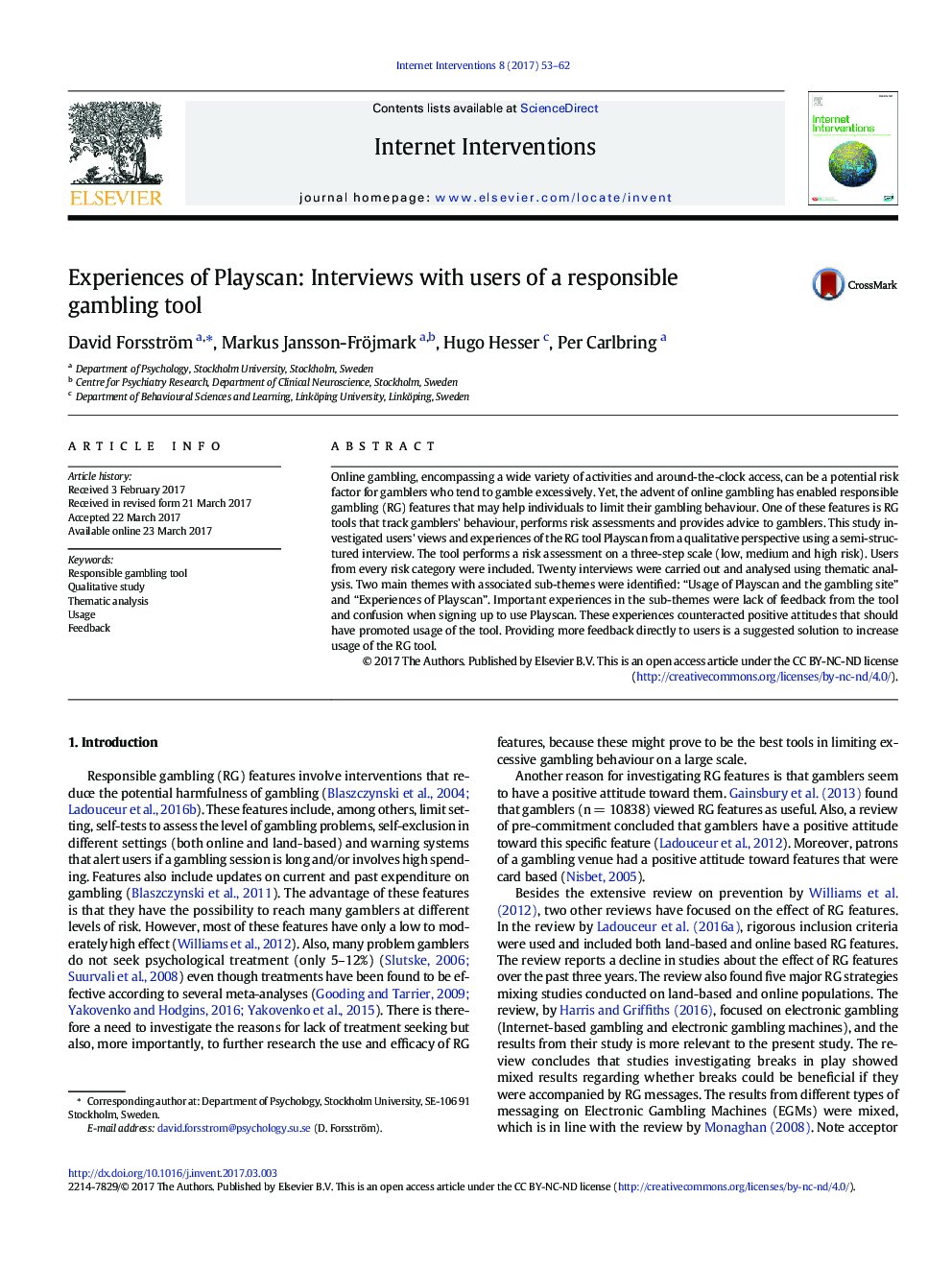| کد مقاله | کد نشریه | سال انتشار | مقاله انگلیسی | نسخه تمام متن |
|---|---|---|---|---|
| 4972721 | 1451168 | 2017 | 10 صفحه PDF | دانلود رایگان |

- This study investigated users' views and experiences of the RG tool Playscan using qualitative methods.
- Two main themes with associated sub-themes were identified: “Usage of Playscan and the gambling site” and “Experiences of Playscan”.
- Most of the participants have a positive view of the tool and positive experiences of the tool. However, they do not use the tool repeated times.
- The positive aspects should encourage use, but lack of feedback to the users and confusion about joining the tool seem to limit use.
- More feedback and/or a strong need to use the tool are suggested ways to overcome the paradox.
Online gambling, encompassing a wide variety of activities and around-the-clock access, can be a potential risk factor for gamblers who tend to gamble excessively. Yet, the advent of online gambling has enabled responsible gambling (RG) features that may help individuals to limit their gambling behaviour. One of these features is RG tools that track gamblers' behaviour, performs risk assessments and provides advice to gamblers. This study investigated users' views and experiences of the RG tool Playscan from a qualitative perspective using a semi-structured interview. The tool performs a risk assessment on a three-step scale (low, medium and high risk). Users from every risk category were included. Twenty interviews were carried out and analysed using thematic analysis. Two main themes with associated sub-themes were identified: “Usage of Playscan and the gambling site” and “Experiences of Playscan”. Important experiences in the sub-themes were lack of feedback from the tool and confusion when signing up to use Playscan. These experiences counteracted positive attitudes that should have promoted usage of the tool. Providing more feedback directly to users is a suggested solution to increase usage of the RG tool.
Journal: Internet Interventions - Volume 8, June 2017, Pages 53-62